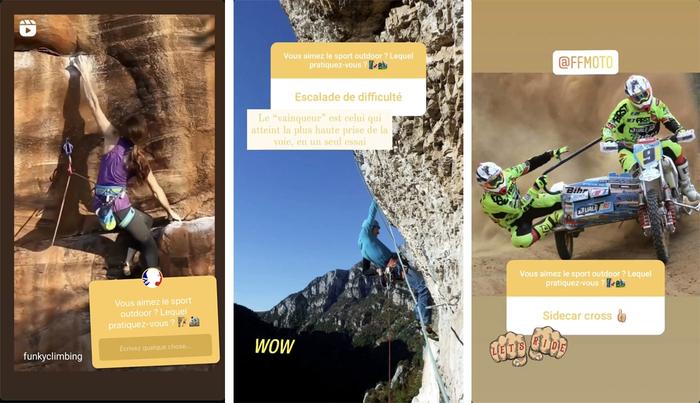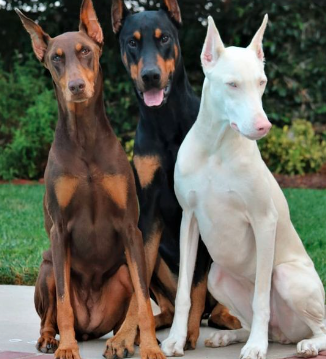The Ministry of Sports presents its social media strategy: issues, commitment, your quirky ...
The Ministry of Sports invites its Instagram followers to interact and share their sports passions.
Can you present your profession in a few words?
I am in charge of digital communication for the Youth and Sports communication delegation. I often summarize by saying that I work for the Ministry of Sports, which in fact occupies 80% of my time, but I also work on youth issues. To be very clear, let's say that my service works in conjunction with two ministers: Roxana Maracineanu, Minister in charge of Sports, on the one hand, and Sarah El Haïry, Secretary of State in charge of Youth and Engagement, on the one hand. 'somewhere else. In both cases, my mission is to define the digital communication strategy and implement it.
Who do you mainly work with to define the ministry's social media strategy? How does this work in practice?
First of all, I work with my colleagues from the DELCOM JS web division, two community managers and a web project manager. Any social media strategy is based on solid monitoring and on the reporting that we carry out after each campaign, everyone has their say and contributes their ideas to the common reflection. Apart from a subject as ubiquitous as COVID, we work thematically with the community managers, each following their own files. It is therefore fundamental that the strategy be shared. The pole also works in close collaboration with the cabinets of Ministers. In the very specific context of the health crisis, these exchanges between the web division and the firm have been reinforced, allowing a high level of coordination in the actions carried out.
What are the main objectives of the Ministry of Sports on social networks?
The main communication objective of the Ministry of Sports, on social networks as elsewhere, is to publicize its action and its policies public. I am used to saying that a public policy without communication is a public policy that does not exist. How would our fellow citizens have recourse to devices of which they are unaware?
The latest example concerns the Sésame scheme, which is a training course allowing young people aged 16 to 25, without qualifications, to find work in the field of sport or entertainment. 3,000 new training courses are available throughout the national territory, but young people who are potentially interested still need to know this.

For example, it was while working for this ministry that I discovered the existence of an exclusively Picardy sporting and cultural practice: the "balloon in the fist". Diversity of practices but also of practitioners, our communication also aims to develop certain aspects of sport in general such as women's sport or even disabled sport.
What are the preferred platforms (and content) for the communication of the Ministry of Sports and why?
The Ministry of Sports has accounts or pages on the general public networks such as Facebook, Twitter, Instagram and LinkedIn. In general, I think that the ministries, as public services, are intended to be present on all the social networks where the French are.
This partly explains why we knowingly leave aside certain networks such as Snapchat or Tik Tok, whose logic of content with very short videos to be renewed daily, is today out of reach with regard to our human and financial resources. . However, I am convinced of the relevance of these platforms which reach a young target, traditionally difficult to reach for institutional communication. Also, if we do not currently have accounts there, we do not prohibit ourselves from integrating them into some of our campaigns via media buying.
Do you adopt different tones to communicate?
Of course, when you choose to invest in social networks, you have to be ready to respect their codes. Everyone has their uses and our editorial line adapts to them. The conversational logic is very different on Facebook where users will leave comments under a publication in an ultimately inconspicuous way, whereas on Twitter the statements of accounts, even those with little following, can quickly explode.
Twitter is also a punchline and meme network where you can probably afford more. Instagram for its part is an image network, we will also distill a more offbeat communication there than on Facebook but it will still take a different form.
What means do you implement to develop community engagement?
The best way to develop one's community and one's engagement is to multiply interactions, this is why we are putting a point of honor to answer questions from our subscribers.
On Twitter in particular, the result is obvious, we have doubled our number of subscribers since March 2020, which coincides with the start of the health crisis (the 1st confinement) which put our ministry at the center of a large number of exchanges on sports practice. Users know where to find us online and know that their questions will be answered. This is the best way for us to engage them.
An offbeat tone in relation to the institution's digital identity and content treated from original angles are other ways to create engagement among subscribers to already well-filled news feeds.
What are the constraints when managing social networks for a ministry?
The main constraint is to find the balance between the institutional image of the ministry, a traditionally very top-down communication, and the intrinsic nature of social networks which are intended above all to be horizontal. You have to succeed in creating a link with subscribers while being the guarantor of the seriousness of accounts that represent the French State.
What new skills do you think are necessary for the profession?
More than skills, I think that the digital communicator must have two fundamental character traits: curiosity and empathy. Many training courses have been developed over the years in French universities and I have no doubt that anyone who wants to work in this field can find a way to acquire technical skills. But whatever his skill level at a given time, he will have to keep in mind that the web is constantly evolving and that his training will never be completely complete.
When a network like Tik Tok appears, questions necessarily arise: should I go? How ? To say what? This permanent state of curiosity must be coupled with a very strong empathy, to understand the uses of the different social networks but also to provide relevant answers to its subscribers. You have to put yourself in the other person's shoes on networks where the written medium leaves room for a lot of interpretations and therefore potentially misunderstandings. This is all the more true when you use humor, you have to be very vigilant and able to anticipate potential reactions.
Any advice for future community managers?
The best advice I've ever been given is to take an interest in all areas of communication. Not to the point of being able to exercise each of these professions but enough to understand the constraints. This makes it easier to communicate with colleagues. What is more, the job of CM covers many different realities depending on where you practice it and the means at your disposal.
Some will do monitoring but no moderation, others will create content but will not respond to subscribers, etc. What seems important to me is to know what each of these tasks entails because they are all necessary for good digital communication even if they are not all part of your job description.
Discover community manager training
Leave a comment Cancel reply
Your email address will not be published. Mandatory fields are marked with *










10 Ways to Stay Safe When You Live Alone
How to draw a rose: our methods
Hotels, restaurants: tips paid by credit card will soon be tax-exempt
"I was a rot in the evening and a good cop in the morning": meeting with "Haurus", the thug policeman of the DGSI